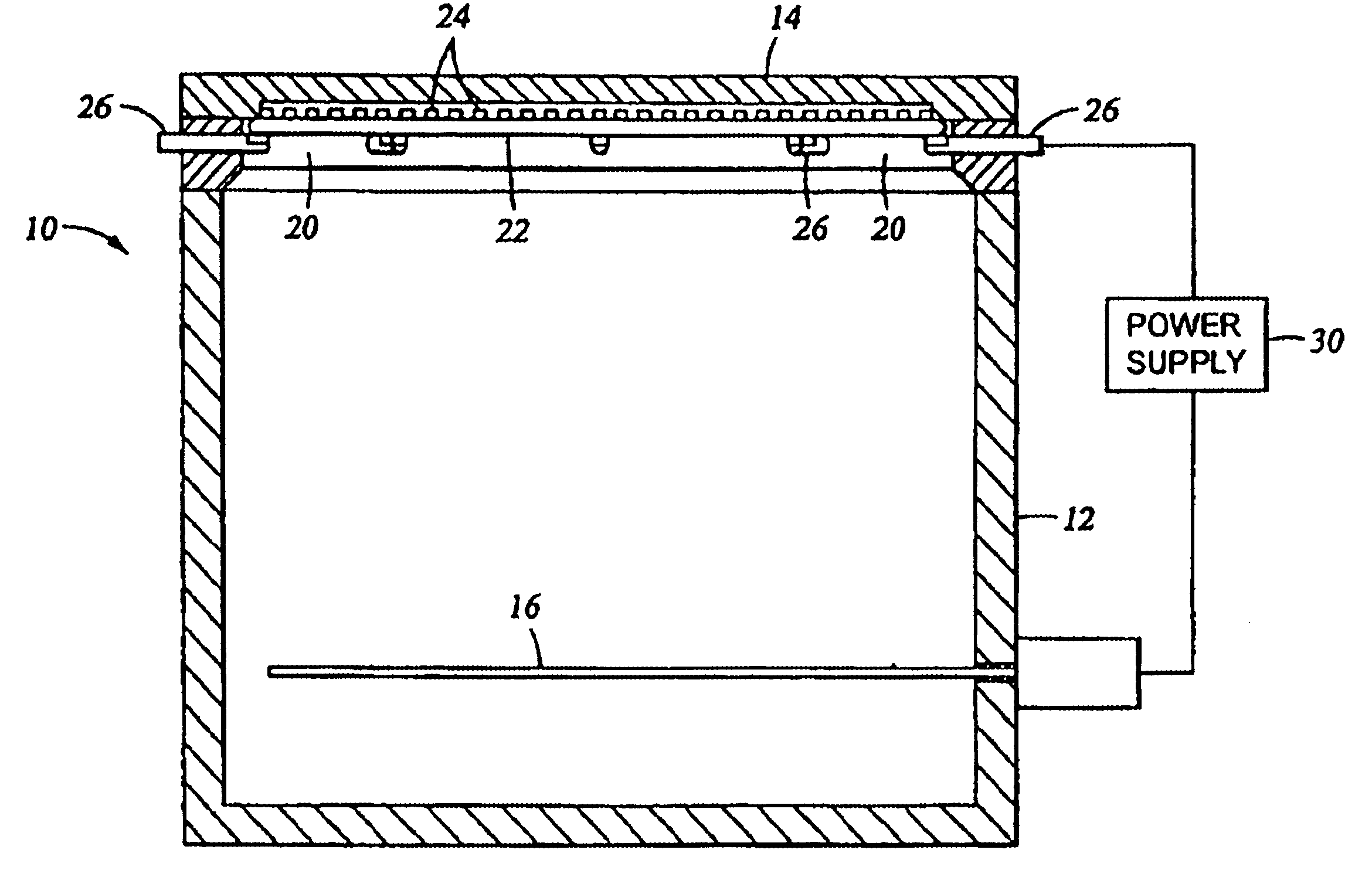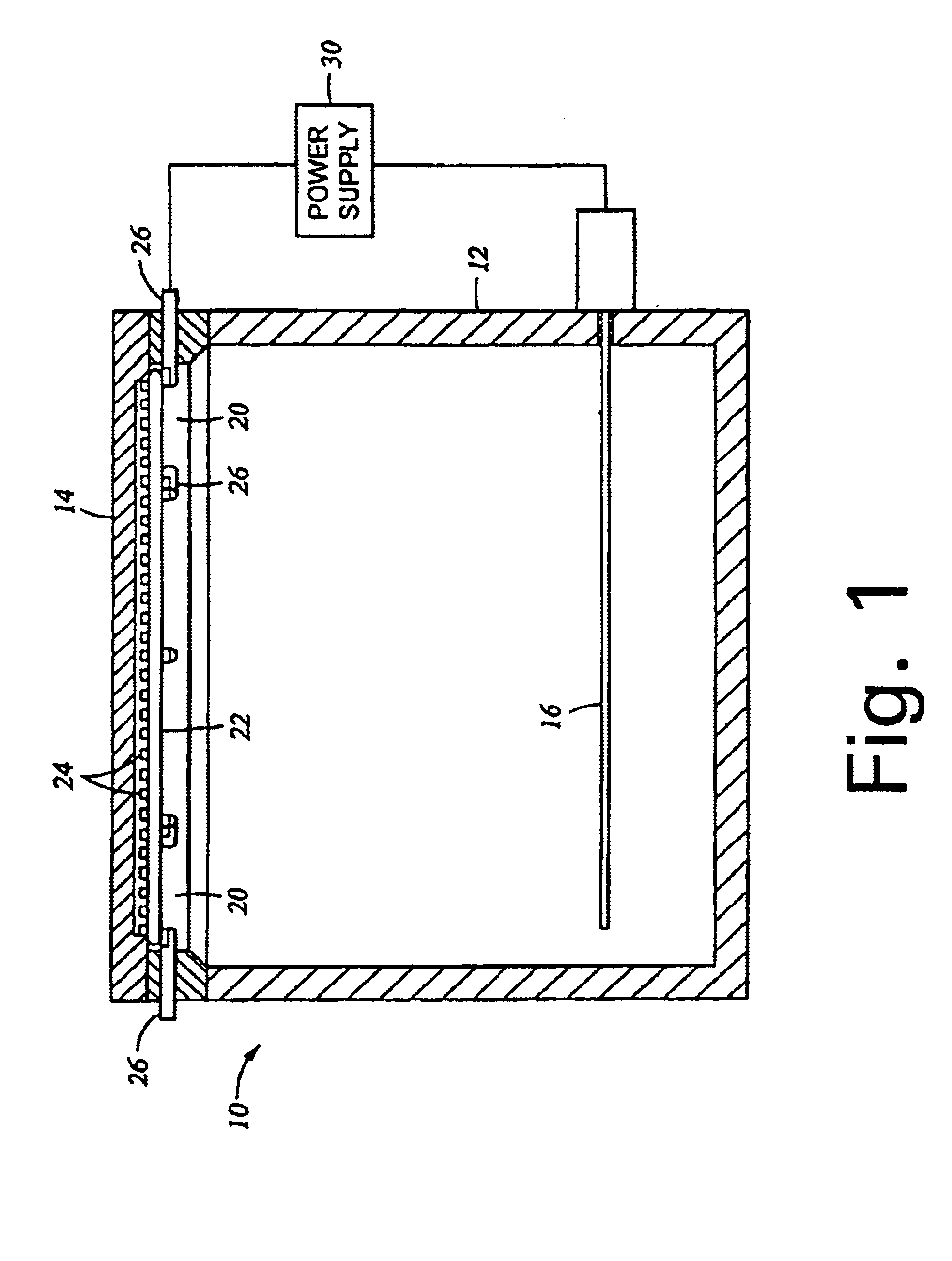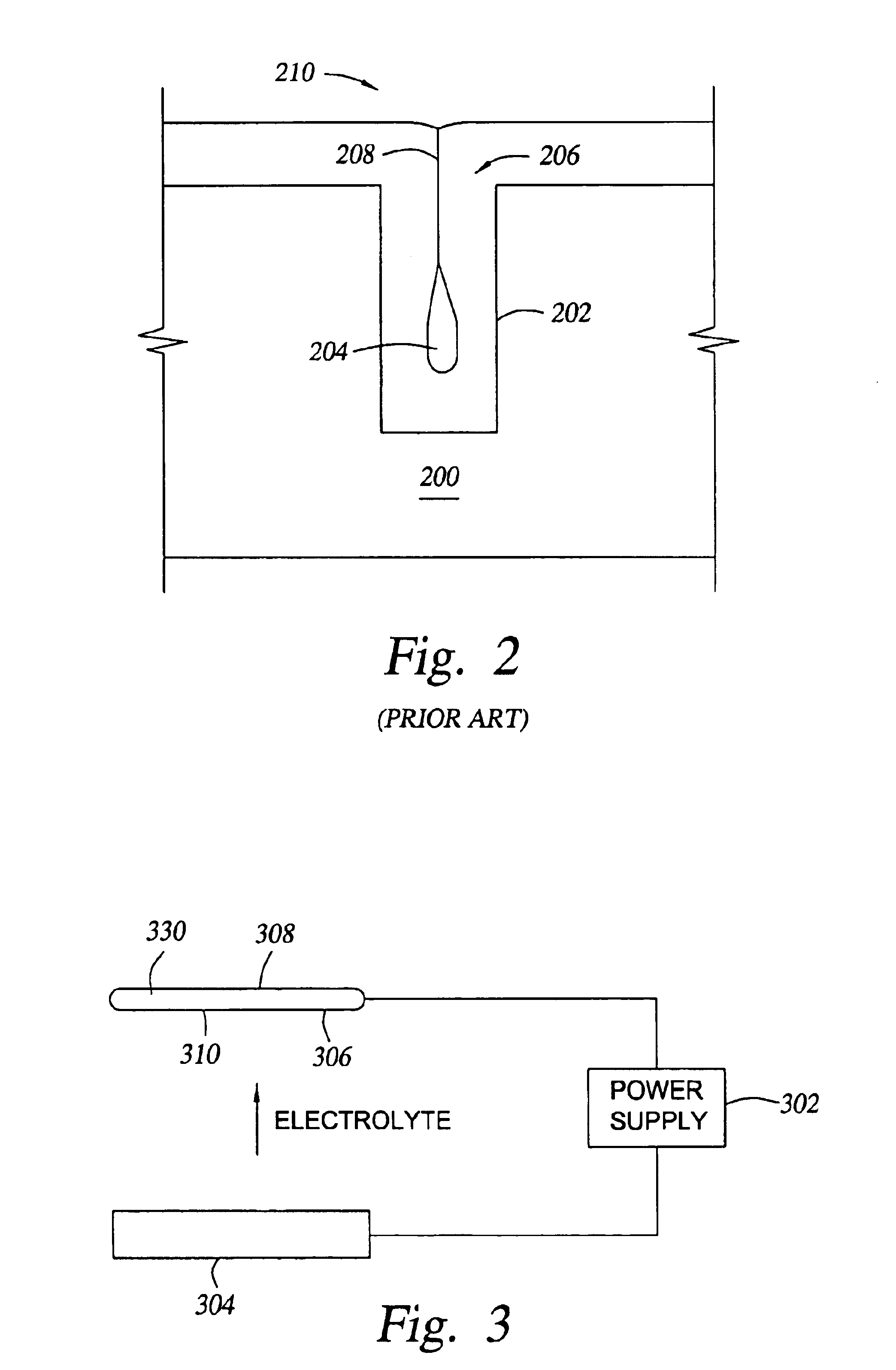Dynamic pulse plating for high aspect ratio features
a technology of dynamic pulse plating and feature, applied in the field of electrochemical deposition of metal, can solve the problems of increasing the current density of the feature, void formation in the conductor, and many conventional deposition processes have difficulty filling structures, etc., and achieve the effect of high aspect ratio features
- Summary
- Abstract
- Description
- Claims
- Application Information
AI Technical Summary
Benefits of technology
Problems solved by technology
Method used
Image
Examples
example
[0048]An example is given below of copper electroplating according to one embodiment of the invention on a substrate having high aspect ratio interconnect features. Prior to electroplating, a barrier layer comprising about 250 Å of tantalum nitride is deposited by physical vapor deposition over the substrate using processing parameters that are known in the art. Preferably, the barrier layer is deposited using a Vectra IMP™ chamber from Applied Materials, Inc., Santa Clara, Calif.
[0049]A copper seed layer having a thickness of about 2000 Å is formed on the barrier layer, using, for example, known processing parameters for physical vapor deposition. The substrate is then transferred to an electroplating cell, e.g., a Millenia™ ECP system, available from Applied Materials, Inc., for copper electroplating.
[0050]In this embodiment, the electroplating bath comprises 0.85 M copper sulphate, appropriate additives (suppressers and accelerators) and chloride ions at about 60 to about 70 ppm,...
PUM
| Property | Measurement | Unit |
|---|---|---|
| time | aaaaa | aaaaa |
| time | aaaaa | aaaaa |
| time duration | aaaaa | aaaaa |
Abstract
Description
Claims
Application Information
 Login to View More
Login to View More - R&D
- Intellectual Property
- Life Sciences
- Materials
- Tech Scout
- Unparalleled Data Quality
- Higher Quality Content
- 60% Fewer Hallucinations
Browse by: Latest US Patents, China's latest patents, Technical Efficacy Thesaurus, Application Domain, Technology Topic, Popular Technical Reports.
© 2025 PatSnap. All rights reserved.Legal|Privacy policy|Modern Slavery Act Transparency Statement|Sitemap|About US| Contact US: help@patsnap.com



